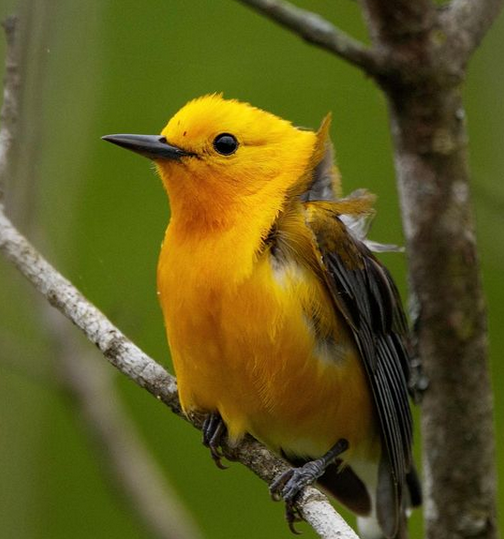Few species of Warbler are more delightful to encounter on a spring walk than the Common Yellowthroat.
I spotted this one while birding at Bass Lake Park in Holly Springs NC.
With those inquisitive dark eyes peering out against a black face mask paired with a cheerful bright yellow plumage, it’s hard not to smile when watching one go about it’s day of hunting for insects in the brush.



As their name implies, Common Yellowthroats are indeed “common”. Not only do they nest in all 100 countries of North Carolina, they actually boast a breeding range that stretches across the entire United States and even over most of Canada! This makes them one of the most abundantly found species of Warbler on the continent.
Quite a feat for such a tiny bird!
One of my favorite characteristics of these beauties is their friendly demeanor. When not actively nesting, they’re quite curious about people and will fly in close to check you out if you try pishing at them. It’s neat to get a close up look at these lovely feathered gems when the opportunity presents itself.
Look for the Common Yellowthroat in open fields and along the shorelines of marshes, ponds and streams hiding out in thickets and dense brush.
Aren’t they sweet?
Photos by @sally_siko of @birdwatching_nc on the full frame beast of an SLR, the mighty @canonusa
#5Ds



























